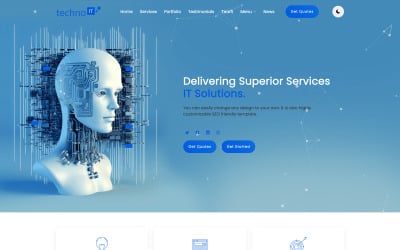Why Responsive Website Design is Essential for Today's Digital Market
Why Responsive Website Design is Essential for Today's Digital Market
Blog Article
Increase Interaction With Cutting-edge Web Site Style Solutions
In the world of electronic interaction, the significance of innovative internet site design solutions can not be overstated. A thoughtfully crafted customer experience, underpinned by critical visual design and interactive components, can substantially enhance customer interaction. By discovering various methods such as receptive layout and individualized content, companies can create a platform that not just captivates customers yet also cultivates lasting commitment. However, the challenge depends on understanding the nuances of customer actions and preferences. This elevates a crucial inquiry: what details strategies can be implemented to make certain that a web site remains user-centric and engaging?

Comprehending Individual Experience
Understanding customer experience (UX) is essential for developing effective site design services, as it directly influences how individuals engage with digital systems. A thorough UX technique incorporates different components, including accessibility, functionality, and individual contentment, all of which add to the overall efficiency of a website.
To start with, functionality concentrates on how quickly users can browse and discover the info they seek - website design. A well-structured format, instinctive navigation, and clear phone calls to activity are essential components that boost usability. Accessibility makes certain that all individuals, including those with specials needs, can effectively interact with the site. This involves creating material that is certified with availability criteria and can be conveniently accessed using assistive technologies.
Furthermore, understanding customer personas is essential for tailoring the experience to satisfy specific target market requirements. By carrying out user research study and screening, developers can gather understandings that inform layout choices, guaranteeing the site not just fulfills visual objectives but likewise meets functional needs. Ultimately, a thoughtful strategy to UX style cultivates interaction, motivates retention, and improves total customer contentment, which are crucial for the success of any type of digital platform.
Visual Design Strategies
Integrating efficient visual design techniques is essential for recording individual attention and enhancing the overall customer experience on a website. A well-thought-out visual power structure guides users through the material, enabling them to conveniently browse and soak up information. This can be achieved via the critical usage of typography, color systems, and spacing, which collectively create a natural and interesting layout.
Shade plays a crucial function in establishing and evoking emotions brand identity. Making use of a balanced shade palette that lines up with the brand's values can foster familiarity and trust fund. Additionally, integrating high-grade photos and graphics improves visual charm and can substantially boost user interaction.
Whitespace, often forgot, is just as vital as it allows content to take a breath and protects against overwhelming users with clutter. It assists in much easier analysis and understanding, causing a more satisfying browsing experience.
Lastly, consistency in style components-- such as button designs, symbols, and font styles-- guarantees a smooth customer journey, enhancing the brand name's professionalism. By purposefully executing these aesthetic style methods, sites can not only draw in visitors yet also encourage them to remain longer and involve even more deeply with the material.
Interactive Aspects for Interaction
Involving individuals efficiently usually pivots on the application of interactive elements that invite engagement and cultivate a vibrant browsing experience. These components, including quizzes, surveys, and interactive infographics, motivate users to actively get involved instead of passively consume web content. By integrating such attributes, web sites can not just record focus however additionally improve user retention.

Gamification is another powerful strategy. Integrating game-like aspects, such as accomplishments or incentives for finishing jobs, can change ordinary communications right into delightful experiences. This approach not only increases engagement but additionally motivates customers to return, developing a dedicated audience.
In addition, interactive aspects can help with social sharing, magnifying a site's reach. Features like comment sections, share switches, and user-generated content locations foster community interaction, turning visitors right check my blog into active individuals. website design. Eventually, the tactical use of interactive components is necessary for developing a engaging and engaging web site that resonates with individuals
Flexible and responsive Design
A properly designed website must prioritize flexible and responsive design to make sure ideal customer experiences across a selection of gadgets and display dimensions. Receptive design employs liquid grids and versatile photos, permitting the layout to automatically readjust based on the viewer's screen size. This strategy makes sure that users can easily engage and browse with the web content, no matter whether they are making use of a smartphone, tablet computer, or desktop .
In comparison, flexible design uses predefined layouts that are tailored to specific device categories. This means that the website spots the sort of tool being used and offers the proper layout, which can boost loading times and optimize the display screen of essential components. While both approaches aim to improve use, responsive design is frequently preferred for its fluidness and smooth change in between gadgets.
Including flexible and receptive design not just boosts individual fulfillment however additionally positively affects search engine rankings. Internet search engine focus on mobile-friendly sites, hence enhancing exposure and attracting more visitors. Therefore, purchasing these design strategies is critical for organizations looking to engage their target market successfully and preserve an affordable edge in today's electronic landscape.
Analyzing Customer Comments and Information
Individual feedback and data evaluation are important elements of effective site design, as they offer beneficial insights right into individual behavior and choices. By systematically analyzing and gathering customer feedback with studies, usability screening, and analytics tools, developers can determine discomfort factors and locations for renovation. This data-driven approach makes it possible for organizations to adjust their web site aspects, guaranteeing that the customer experience lines up with audience assumptions.
Assessing metrics such as bounce prices, time on page, and click-through rates provides a measurable perspective on individual engagement. These metrics aid designers recognize which web content reverberates and which areas might need optimization. A/B testing can be used to examine variants in design, enabling developers to make enlightened choices based on customer interactions.
Including customer feedback not just boosts site usability however additionally fosters a feeling of area and trust. Involving with users through responses loops grows loyalty and urges repeat brows through. Ultimately, leveraging user responses and data analysis is integral to developing a dynamic, user-centered website that adapts to evolving individual demands and preferences, thus driving higher involvement and contentment.
Conclusion

An attentively crafted user experience, underpinned by strategic aesthetic layout and interactive aspects, can significantly enhance user involvement.Including reliable visual design strategies is necessary for capturing individual focus and boosting the overall user experience on an internet site.Customer feedback and information evaluation are necessary components of effective internet site layout, as browse around this site they provide important understandings right into customer actions and choices. Ultimately, leveraging individual comments and information evaluation is essential to developing a vibrant, user-centered site that adapts to developing user needs and choices, consequently driving greater involvement and fulfillment.
In conclusion, cutting-edge internet site style options considerably enhance user interaction by prioritizing customer experience, utilizing efficient aesthetic approaches, and incorporating interactive components.
Report this page